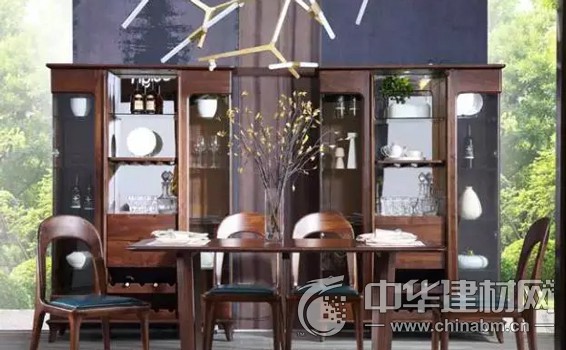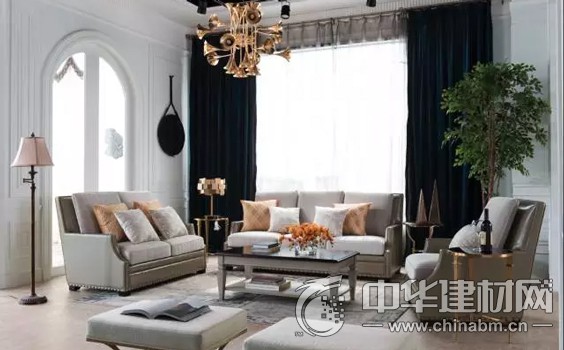According to the CSIL research data of the Milan Industrial Research Center, in the past five years from 2010 to 2014, world furniture production continued to rise, with total output value rising from US$24 billion to US$41.5 billion. Although world furniture production declined in 2015, it still exceeded $40 billion, an increase of 20% compared to 2010. In 2015, Asia Pacific, including South Korea, India, Japan and other countries, produced 55% of the world's furniture production, compared with 26% in Europe. CSIL predicts that in the next few years, almost 75%-80% of the production and marketing of wooden furniture in Asia will increase to a certain extent, but at a slower rate.

Asian furniture production status
Production capacity: It must be acknowledged that since most furniture companies in Asian countries are private, their production capacity and development are highly vulnerable to capital constraints. Therefore, to a certain extent, the confidence of investors and banks in enterprises is directly related to the production capacity of furniture enterprises. Of course, the most important thing is the positioning of the company itself, especially their own profitability determines their production capacity. Fortunately, the global furniture market continues to grow, giving furniture companies a certain degree of confidence, but because the product prices are too low, the profit is not high, increasing their survival pressure. In 2015, the decrease in the total output of the global furniture market, coupled with the reduction in production capacity and demand, has greatly affected the profitability of enterprises.

Material supply: Material supply is crucial for furniture production and is diverse, especially for wood resources. In Asian countries, few countries have all the timber resources they need, and most countries are caught in the absence of furniture and timber resources. This is also an important reason why the timber import trade is smooth. At this stage, the United States is the best source of long-term supply of hardwood resources, and despite the large number of plans to plant timber resources in China, there is still a serious lack of various wood raw materials, and this situation may exist for a long time.
Design issues: In the past decade, design issues have been a hot topic in the furniture industry, and the future will be. The furniture industry has been calling for furniture design, especially the government, to improve the design capacity of the furniture industry to increase the total export volume and gain market share.
A very real problem facing Asian countries is the lack of international designers. Of course, furniture companies can hire foreign designers to design their own products, but the most sensible thing is to try to cultivate local designers, and to do this as a long-term career.
The biggest benefit of using a local designer is that the product retains some Asian elements, not just the strong Western design. More importantly, as the internal trade between Asian countries develops further, the demand of Asian designers will further increase.
Asian furniture business market status
Although the global market is affected by various political disputes, war turmoil, economic disputes and other factors, the major furniture exporting countries in Asia are in a disadvantageous state, but there are still many favorable advantages that are gradually becoming prominent. For example, the long-term growth of consumption power in the United States, the booming real estate market, and even China's own strong domestic market have injected strong momentum into the furniture industry.
The market is complex and changeable. Over the years, the number of furniture has gradually increased, such as residential civilian furniture, office furniture, leisure furniture, club furniture, etc., in terms of quality is also divided into high-end, mid-range and low-end furniture. Of course, the most important thing is that furniture companies must always understand the market trends and demand trends, such as the current small-scale furniture that saves apartment space, or the demand for smart homes in some consumer groups is increasing. It is important.
Of course, as a furniture company, you need to know which products are outdated and no longer needed in the market. After all, most furniture transactions are a relatively fashionable business, especially for high-end furniture transactions. Design and fashion are the most important. Elements. For example, Zeppela in Indonesia now has a significant reduction in the demand for traditional teak carving.
The most likely way to adapt to market development is to understand the trend of industry development and take the road of brand development.
Future development opportunities
China is the key to Asian furniture manufacturers. The vast regional culture has greatly promoted its development, and the market scale, increasingly deepened production standards and development prospects are the main driving forces. In the process of material supply, the lack of attention and protection of environmental issues is only temporary. After all, China is advancing its own forest legislation and import regulations.
It cannot be denied that the United States will remain a very important market for Asian manufacturing, and the US dollar and Asian currency exchange rates will be the most powerful driving force in this market. In the next two years, the European market will inevitably shrink, but some countries that have stopped producing furniture, such as the United Kingdom, have provided export opportunities for Asian furniture producers. In addition, the high-end market and mass market represented by European immigrants promote some additional purchases. Significant changes will occur in the Middle East and North Africa market, and the amount of imported furniture will decrease. The destruction of successive years of war, the sluggish tourism industry caused by atrocities, and the sluggish local economic development have directly reduced the market demand rate.
What needs to be said is that before the economic boom and purchasing power return, products exported to the Australian market need to properly adjust product prices and improve the price system.
However, India is unlikely to be a country for large-scale production of mid- to high-end furniture, so its growing middle class continues to provide market opportunities for other Asian suppliers.
Overall, the status quo of Asian furniture production and market seems to be better than any country or region in the world.
Racing Chair is a hotsale design from our company,we have our own mold of whole chair,base on this advantage.we developped the chair configuration,as we know, NYLON frame will more durable than PPthe chair whole frame is made with Nylon,also,we made more wide seat cushions size than market to suitbale for more people.all the components are passed SGS test.
Value is at the core of the Judor brand but that doesn`t mean Judor cuts corners. Judor offers powerful, cool, and easy to use tech that cover the staples of accessories. We provide the customer an excellent product at an impulse/entry level price that can`t be beat.
Judor Factory Price Executive Led Gaming Chair Computer Chairs Leather RGB Lighting Racing Chair OEM Factory Wholesale Pu Leather Gaming Chair Office Chair Racing EN1335 Certified EN12520 Certified PUBG Computer Swivel Gaming Chair Office Racing Seat With Footrest
Gaming Office Chair,Gaming Computer Chair,Gaming Desk Chair,Mesh Gaming Chair
Anji Judor Furniture Co., Ltd. , https://www.cnjudor.com